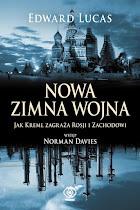COLD, empty and rich in fish and minerals, the seas of the “High North” are a tempting prize for a big, confident country. Even before the startling news of Vladimir Putin’s offer of a €4 billion ($5.4 billion) emergency loan to Iceland (see article), Russia had been beefing up its presence in a part of the world where the NATO presence is fitful. Although American submarines still ply the northern seas, other NATO vessels are rarely seen. America bruised Icelandic feelings when it pulled out of its Keflavik air base in 2006. The Kremlin, by contrast, commands a cash pile of over $500 billion and, despite sagging markets in Moscow, is well-placed to assist a country facing bankruptcy. Iceland’s prime minister, Geir Haarde, said that apart from some support from Nordic states, he had received little response to his appeals for help from Western countries. “When our old friends didn’t help us, we had to find new friends,” he declared. What Russia might want in exchange is unclear. But it is unlikely to be nothing. That highlights worries elsewhere, particularly in Norway, where fighter jets scramble on average once a week to intercept Russian warplanes buzzing close to their country. The Kremlin’s aircraft and ships do not quite break international law. But they commit what a senior official terms “breaches of etiquette”. These have included naval manoeuvres in the midst of Norway’s oil and gas platforms in the North Sea, involving aggressive air sorties that grounded all offshore helicopter flights; that was inconvenient, expensive and dangerous. Also troubling was a mock bombing run against Norway’s northern command centre at Bodo, and at least three other, so far unpublicised, incidents. Russian planes and ships may be old, but training and upkeep have improved and some of the weapons they carry are increasingly modern, such as a new long-range cruise missile. Some think Russian submarines in the north have been experimenting with the Shkval, a super-fast torpedo that gives Western navies the jitters. “Russia is establishing a new reality in a strategically empty space,” says Jon Bingen, a defence analyst in Oslo. Legal fuzziness increases Russia’s room for manoeuvre. The “grey zone” off the northern tip of Norway (see map) is claimed by both countries. Another dispute is around the island of Spitsbergen, on which Russia has had mining rights since 1920. Norway says it owns the continental shelf around it. Others, chiefly Russia, don’t agree. Russia is prospecting for minerals beneath the seabed there. Norway objects to that, and to Russian trawlers’ sometimes cavalier behaviour; their on-board electronics can be unusual, too. Norway is the only old European NATO member bordering Russia. Its military planners are disappointed by their allies’ tepid response to Russian provocation—for instance when a rogue Russian trawler briefly kidnapped Norwegian fishing inspectors in 2005. At stake are not just fish, hydrocarbons and minerals: melting ice means that the Arctic, once largely a dead end, may become a strategic route to East Asia. How to deal with Russia after its war with Georgia in August has become a key issue for NATO, whose defence ministers met in Budapest on October 9th. America wants the alliance to drop its taboo on making contingency plans to defend members that feel threatened by Russia, such as Estonia. Norway plays down the threat of real conflict. “Unlike some ex-communist countries, we are not hysterical,” an official insists. Indeed, neighbourly relations on border controls and sea safety have survived Russia’s freeze on military contacts with NATO. A Norwegian firm is weighing whether to help exploit the Shtokman offshore gasfield, a showcase investment project for the Kremlin. But even the most sanguine Norwegian officials admit that the “trajectory” in Russia is worrying. Norway is quietly boosting defence co-operation with Sweden and Finland. And it hopes to “NATO-ise” a big land, sea and air military exercise next spring, named Response. Just what that is responding to is left tactfully unclear.
The High North
The Arctic contest heats up
From The Economist print edition
What is Russia up to in the seas above Europe?
You are here: Home > Russia > Norway's security
Thursday, October 09, 2008
Norway's security
Oct 9th 2008 | OSLO
Subscribe to:
Post Comments (Atom)
























1 comment:
That "a Norwegian firm" (that would be majority state-owned StatoilHydro, Norway's by far biggest company and a big international oil and gas player) is "weighing whether to help exploit" Shtokman, is an enormous understatement. StatoilHydro has been pursuing a stake in Shtokman very aggressively, and "won" in competition with US and other international oil companies. StatoilHydro, i.e. the Norwegian political-economic establishment, has placed a very big bet on Shtokman (Gazprom is the majority developer). How that will play out in the security scenario you describe in the article, is of course the big question.
Post a Comment